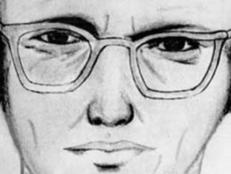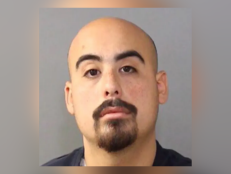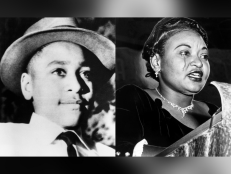Innocent Man Freed By DNA After 25 Years Makes Legal History

Michael Morton, Eric Morton, Christine Morton/MichaelMorton.com [promotional image]
AUSTIN, TX — On October 4, 2011, Michael Morton, 47, walked out from the Texas prison where he’d been held for the previous 25 years. Morton was not only free, but he was also innocent and a DNA test had proven it.
Two months later, the state officially exonerated Morton for the 1986 murder of his wife, Christine Morton, for which he had been wrongfully convicted.
The very same DNA evidence that cleared Morton also implicated and later convicted Mark Alan Norwood, a suspect in a similar murder.
The bandana from which the DNA was harvested would further go on to disbar and imprison District Attorney Ken Anderson, the prosecutor who zealously fought to lock up Michael Morton and then even more zealously fought against any further DNA testing that might affect the outcome.
It turned out that Anderson had his reasons, and they all came to light.
On the morning of August 13, 1986, Michael Morton got dressed and departed to do a shift at the local Safeway, where he managed the pharmacy department. The night before, Morton and his family had happily celebrated his 32nd birthday.
It was a day like any other. Morton left his wife Christine sleeping, as well as the couple’s three-year-old son Eric, who had just made it through some very scary heart surgery.
That afternoon, a neighbor happened by and discovered Christine’s lifeless body in her bed. Nothing would ever be the same after that.
As responding officers gathered clues, toddler Eric said “a monster” had broken in and murdered his mom. He said the intruder was not his father, and the child even described him to interviewers.

Getting Life by Michael Morton/front cover image [Amazon]
Neighbors said they saw a man park a green van behind the Mortons’ residence and later scurry off into the woods. Most potentially impactful of all, responders found a bloody bandana near the crime scene.
Regardless, police arrested Morton and charged him with Christine’s murder. When no other possible suspects emerged, Morton went to trial.
None of the previously mentioned evidence — among other examples — ever made it to the courtroom: not Eric’s description of the killer, not the witnesses who saw a green van, and most definitely not the blood-soaked bandana.
Instead, prosecutor Ken Anderson painted a scenario for the jury in which Christine refused to have sex with Morton on his birthday, thereby igniting a homicidal rage in her husband. The D.A. even cried as he laid out this entirely fabricated scenario.
The jury bought it and found Michael Morton guilty. In 1997, he received a sentence of life in prison. A quarter-century passed, then, with Morton suffering behind bars, entirely innocent.
In the meantime, Mark Alan Norwood, the man who actually killed Christine, struck again. In 1988, he bludgeoned Austin housewife Debra Baker to death in her bed. Norwood killed in the same Austin area and used the same M.O., less than two years after murdering Christine.
Norwood remained free, however, for the next two-plus decades, thanks to the illegal conduct of D.A. Ken Anderson, who later admitted to suppressing evidence and delaying inquiries that would have freed Michael Morton and pointed the police toward the real killer.
From jail, Michael Morton worked tirelessly to get his conviction overturned. Houston civil attorney John Raley took up Morton’s case, as did The Innocence Project, a legal entity that fights to free the wrongly imprisoned.
In 2011, the team effort won an okay to have the bloody bandana tested for DNA evidence. The garment turned out to be soaked with the fluids of Christine Morton and Mark Alan Norwood.
Michael Morton, at last, was scientifically eliminated as a suspect. The state set him free.
Following Morton’s release, Ken Anderson told the press: “I want to formally apologize for the system’s failure to Mr. Morton. In hindsight, the verdict was wrong.”
Morton, though, had always accused Anderson of withholding exculpatory evidence and the reversal of his conviction convinced the Texas Supreme Court to take a look.
In 2013, a court of inquiry investigated Anderson and decreed that the prosecutor had not only hidden evidence but that he’d even tampered with it. That April, the board stated:
“This court cannot think of a more intentionally harmful act than a prosecutor’s conscious choice to hide mitigating evidence so as to create an uneven playing field for a defendant facing a murder charge and a life sentence.”
Anderson copped a guilty plea and turned over his legal license. He did 10 days in jail, paid a $500 fine, and agreed to 500 hours of community service. The state subsequently launched an investigation into every case Anderson had prosecuted.
Mark Alan Norwood was convicted of killing both Christine Norwood and Debra Baker.
Michael Morton has since repaired his relationship with his son Eric, who only got to see him twice a year while growing up.
The Innocence Project won the wrongly convicted man a lump sum payout from Texas, along with an annual annuity of $80,000 in addition to job training and educational assistance.
On May 13, 2013, Texas Governor Rick Perry signed into law The Michael Morton Act, which dictates that prosecutors must turn over evidence to defense lawyers, upon a defendant’s request, without necessitating a court order.
Watch Now:
Read more: Michael Morton Official Site, History, Innocence Project, NPR, New York Times









